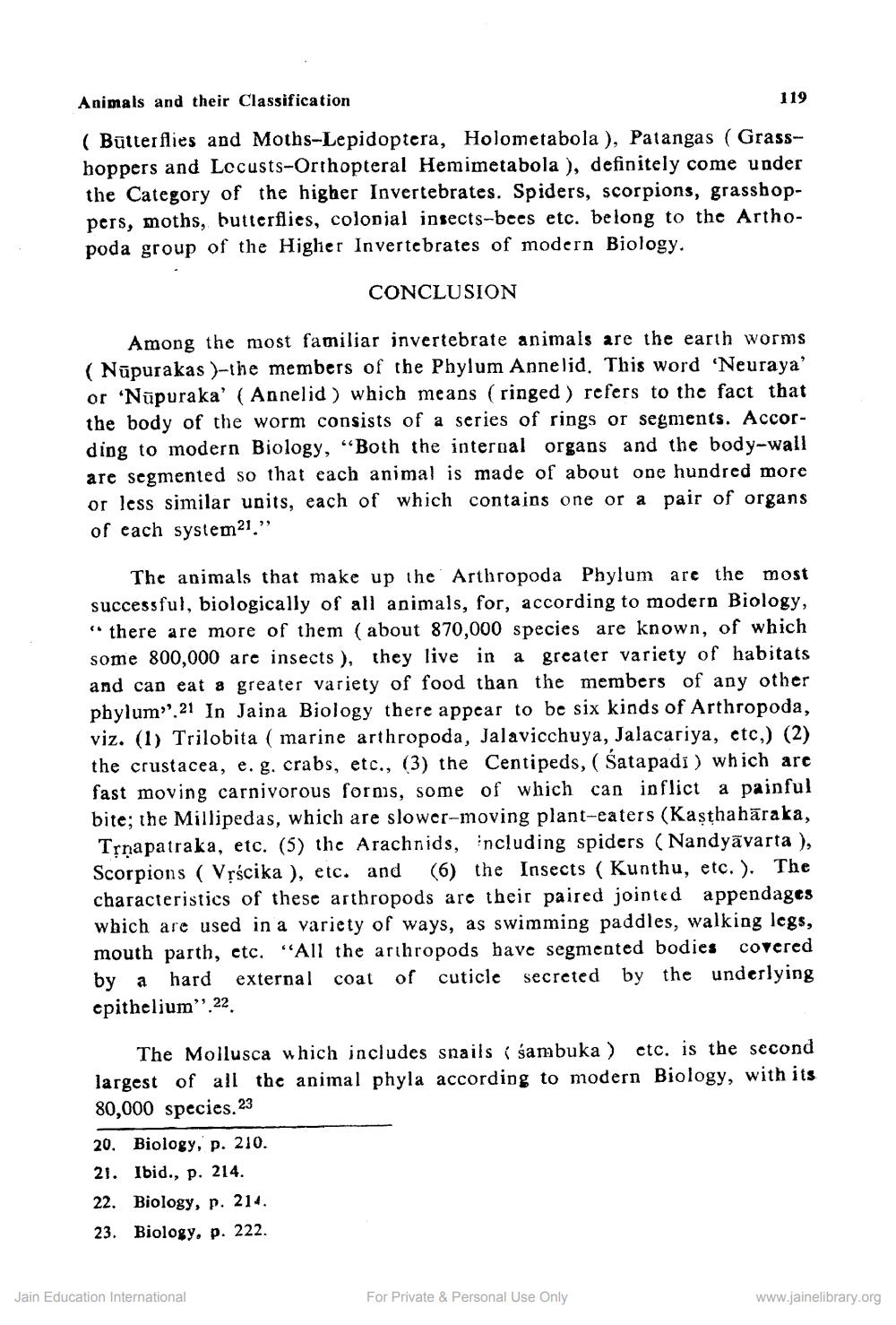________________
Animals and their Classification
( Butterflies and Moths-Lepidoptera, Holometabola), Patangas (Grasshoppers and Lecusts-Orthopteral Hemimetabola ), definitely come under the Category of the higher Invertebrates. Spiders, scorpions, grasshoppers, moths, butterflies, colonial insects-bees etc. belong to the Arthopoda group of the Higher Invertebrates of modern Biology.
CONCLUSION
Among the most familiar invertebrate animals are the earth worms (Nupurakas )-the members of the Phylum Annelid. This word 'Neuraya' or 'Nupuraka' (Annelid) which means (ringed) refers to the fact that the body of the worm consists of a series of rings or segments. According to modern Biology, "Both the internal organs and the body-wall are segmented so that each animal is made of about one hundred more or less similar units, each of which contains one or a pair of organs of each system21."
most
The animals that make up the Arthropoda Phylum are the successful, biologically of all animals, for, according to modern Biology, "there are more of them (about 870,000 species are known, of which some 800,000 are insects), they live in a greater variety of habitats and can eat a greater variety of food than the members of any other phylum".21 In Jaina Biology there appear to be six kinds of Arthropoda, viz. (1) Trilobita (marine arthropoda, Jalavicchuya, Jalacariya, etc,) (2) the crustacea, e. g. crabs, etc., (3) the Centipeds, ( Satapadi) which are fast moving carnivorous forms, some of which can inflict a painful bite; the Millipedas, which are slower-moving plant-eaters (Kaṣṭhahāraka, Trnapatraka, etc. (5) the Arachnids, including spiders (Nandyavarta), Scorpions (Vṛścika ), etc. and (6) the Insects (Kunthu, etc.). The characteristics of these arthropods are their paired jointed appendages which are used in a variety of ways, as swimming paddles, walking legs, mouth parth, etc. "All the arthropods have segmented bodies covered by a hard external coat of cuticle secreted by the underlying epithelium" 22
119
The Mollusca which includes snails (sambuka) etc. is the second largest of all the animal phyla according to modern Biology, with its 80,000 species. 23
20. Biology, p. 210. 21. Ibid., p. 214.
22. Biology, p. 214.
23. Biology. p. 222.
Jain Education International
For Private & Personal Use Only
www.jainelibrary.org




